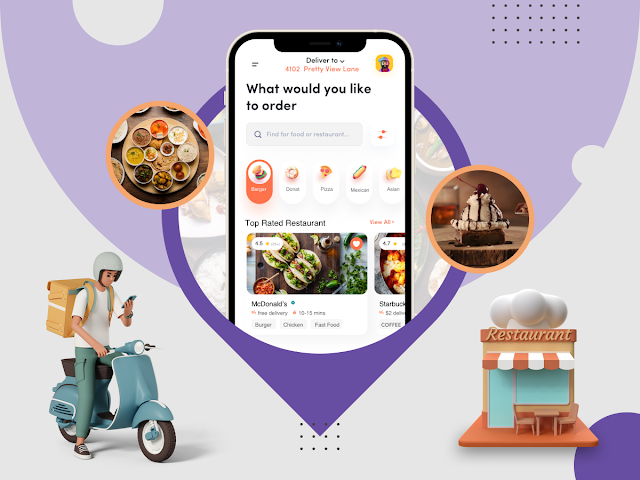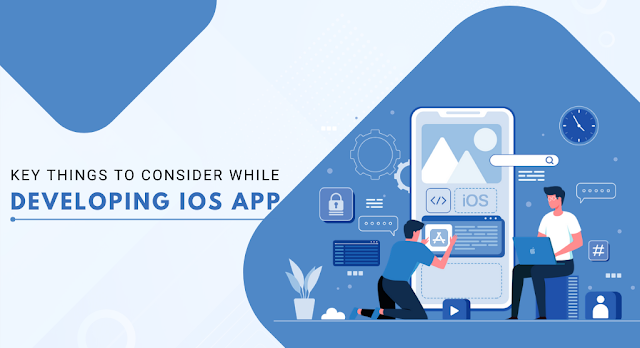Steps to Develop A Food Delivery App in 2024: How Much It Costs?
Developing a food delivery app in 2024 can be a lucrative venture, considering the ever-growing demand for convenient food delivery options.
Are you a foodie entrepreneur dreaming of launching your own food delivery app in 2024? Or maybe you're a restaurant owner tired of relying on third-party platforms and yearning for more control over your online orders?
The booming food delivery market offers incredible potential, with studies showing that 86% of Americans use these apps and global revenue expected to hit $1 trillion by 2023. But where do you start? How much does it cost? Which type of app should you build?
In 2024, the demand for online food delivery is hotter than ever. With convenience king and time a precious commodity, building a food delivery app might seem like a surefire path to success. But before you jump headfirst into app development, understanding the associated costs is crucial.
This guide will answer all your questions and equip you with the knowledge and tools to create a successful food delivery app, whether for your restaurant or a platform like Doordash, Talabat, or Grubhub.
Food Delivery Industry: Key Stats and Facts
The aroma of opportunity rises from the online food delivery space! Whether you're a restaurateur, grocer, or aspiring tech wiz, building a food delivery app in 2024 can be a delicious endeavor. But before you jump in, let's savor some statistics and insights to whet your appetite:
- Skyrocketing Demand: 86% of Americans have used a food delivery app!
- Revenue Explosion: The global food delivery app market is expected to reach $1 trillion by 2023.
- Market Leaders: Talabat, DoorDash, UberEats, and Deliveroo dominate the landscape.
- Growth Potential: Room for new apps to cater to diverse user needs and regional niches.
You may also like: Benefits of Food Delivery App for a Single Restaurant
Steps to Develop a Food Delivery Application
Creating a successful food delivery app in 2024 requires careful planning, a unique value proposition, and execution based on current trends and user needs.
1. Market Research and Analysis
Study the landscape: Analyze existing food delivery apps like Uber Eats, Zomato, and Swiggy. Identify their strengths, weaknesses, and target demographics.
Focus on a niche: Differentiate yourself by catering to a specific niche like healthy food, vegan options, late-night delivery, or budget-friendly meals.
Understand your target audience: Research their food preferences, ordering habits, and pain points. This will guide your app's features and functionalities.
2. Define Your Business Model
Aggregator model: Connect restaurants with customers and charge a commission on each order.
Direct delivery model: Own and operate your own kitchen infrastructure and delivery fleet.
Hybrid model: Combine elements of both models for more flexibility.
3. Key Features for Your App
Customer App:
- User-friendly interface with intuitive search and navigation.
- Personalized recommendations based on food preferences and order history.
- Real-time order tracking with estimated delivery times.
- Secure payment options like digital wallets and online payments.
- Book now or schedule orders at your convenience.
- In-app chat or call functionality to communicate with restaurants and delivery drivers.
Delivery Driver App
- Optimized route planning for efficient delivery.
- Clear instructions and order details for each delivery.
- In-app communication with customers and restaurants.
- Earnings tracker and performance metrics.
Restaurant Panel
- Easy menu management with real-time updates on order status.
- Analytics dashboard to track sales, performance, and customer feedback.
- Tools for managing discounts, promotions, and loyalty programs.
4. Additional Considerations
Sustainability: Explore eco-friendly practices like partnering with electric vehicle delivery services or offering reusable packaging options.
Local focus: Partner with local restaurants and support the community.
Technological advancements: Consider integrating AI-powered chatbots for order customization, voice search, or personalized recommendations.
Marketing and User Acquisition: Develop a targeted marketing strategy to reach your target audience and stand out from the competition.
5. Development and Launch
Choose your development platform: Native apps (iOS and Android) offer better performance, while cross-platform development tools can save costs.
Find a development team: Hire experienced developers who specialize in mobile app development and food delivery systems.
Testing and Quality Assurance: Rigorously test your app for functionality, performance, and security before launch.
App Store Optimization: Optimize your app listing with relevant keywords to improve discoverability.
You may also like: Startup Ideas for Successful Online Office Food Delivery Platform
Tech Stack To Build a Food Delivery App
Selecting the right technology stack is vital for food delivery app development.
- For Android - Kotlin or Java
- For iOS – Swift
- Frontend – React.js, HTML, CSS
- Backend – Node.js, Express.js, Python
- Payments – Braintree, PayPal, Stripe, eWallet
- Push notifications – Twilio, Push.io
- Database – MongoDB, MySQL, PostgreSQL
- Cloud Services – AWS, Google Cloud
- Mapping and location services: Google Maps, Google Places API
How Much Does It Cost To Build a Food Delivery App?
The cost of building a food delivery app in 2024 can vary significantly depending on several factors, but here's a general breakdown to give you an idea:
- Basic app: $8,000 - $15,000
- Medium complexity app: $15,000 - $25,000
- Highly complex app (with advanced features): $25,000 - $50,000 or more
Key cost factors:
- App complexity: More features and functionalities mean more development time and higher costs.
- Development platform: Native apps (iOS and Android) are typically more expensive than cross-platform solutions.
- Development team: Location, experience, and team size impact hourly rates.
- Design and user interface: Custom designs and animations can be costly.
- Third-party integrations: Payment gateways, mapping services, etc., have associated fees.
- Marketing and user acquisition: App store optimization, advertising, and promotional campaigns add to the budget.
The Bottom Line: A Delicious Investment
Building a food delivery app in 2024 is an investment with the potential for high returns. By understanding the cost factors, choosing the right ingredients, and cooking up a smart strategy, you can create an app that satisfies cravings and keeps your business thriving. So, put on your chef's hat, get creative, and start building the perfect food delivery app for your hungry audience!
Overall, investing in food delivery app development services can be a smart move for businesses looking to capitalize on the growing demand for convenience and online food ordering. However, it is important to carefully consider the market, competition, and your own unique value proposition before making any investment.




Comments